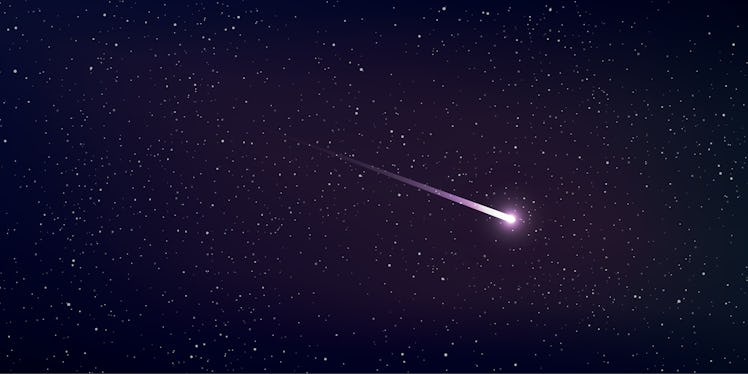The Delta Aquariids Are Coming — Here’s What You Need To Know
Who doesn’t love a shooting star? 💫☄️

There are a lot of things about this world that just seem magical, and looking up at the stars is one of them. We understand that the twinkly lights in the sky are stars, but it’s hard to conceptualize exactly what that means — which becomes even cooler when we think about meteor showers. If you and the kids love watching in wonderment as meteors fly through the sky, get read to look up, because the Delta Aquariids are coming. Here’s what you need to know.
What are the Delta Aquariids?
According to NASA, meteors — like the one seen in the Delta Aquariids — come from bits of broken asteroids and comets that are floating in space. In space, massive chunks of frozen rock, gas, and dust orbit the sun. Those chunks are what we call comets, according to NASA. When a comet goes around the Sun, it gives off a trail of dust, which enters the Sun’s orbit.
“Every year the Earth passes through these debris trails, which allows the bits to collide with our atmosphere where they disintegrate to create fiery and colorful streaks in the sky,” NASA explains.
The Delta Aquariids are this debris — more specifically, this meteor shower is likely the debris from Comet 96P/Maccholz, which orbits the sun every five years, according to NASA. The meteors come from the constellation Aquarius, near the star Delta Aquarii, which is how the meteor shower got its name.
When can I catch the Delta Aquariids?
This year, the Delta Aquariids meteor shower will reach its peak on July 28-29 at approximately 1 a.m. local time, lasting until dawn. Although it’s not the most active meteor shower, you can expect to see approximately 10 to 20 meteors per hour on average shooting through the sky. You may have to let your eyes adjust to the dark for about a half hour before you can spot the meteors.
What’s the best way to see the Delta Aquariids?
If you really want to take in the Delta Aquariids show, you’ll want to make sure you’re as far away from bright lights as possible. This means finding somewhere outside the city, so the sky isn’t lit up from buildings and street lights.
Find somewhere more open, like a field, because the more sky you can see, the bigger the show you’ll get. The meteors will look like typical “shooting stars” — a star with streaks of light. Make sure you look directly overhead, and you’ll probably catch a few.
What’s up next? Two weeks later, on August 11-12, the Perseid meteor shower is set to peak with an average of 90 meteors per hour.
This article was originally published on